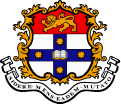
|
University of Sydney
School of Mathematics and Statistics
Applied Mathematics Seminar
Dr Hugh Luckock
School of Mathematics and Statistics, University of Sydney
Modelling the Continuous Double Auction
Wednesday, May 16th, 2-3pm, Carslaw 275.Every day, literally trillions of dollars worth of securities are traded on automated exchanges (such as the SFE and the ASX). The vast majority of these exchanges employ variants of the continuous double auction to match buyers with sellers. In this mechanism, newly received buy and sell orders are placed in queues if they cannot immediately be matched with pre-existing orders. The most competitively priced orders are given highest priority, and placed at the tops of their queues. Orders which are priced less competitively may remain in the queue for a considerable time before their eventual execution, and indeed may never be executed.
Before submitting a buy or sell order, a trader must decide whether to set a competitive price to achieve a quick trade, or a less competitive price in the hope of a more profitable trade while running the risk of delay or non-execution. This decision would be greatly facilitated by a statistical model of the market. However, even if one knows the expected frequency or arrival of bids and offers at arbitrary prices, the construction of such a model proves to be a very challenging problem.